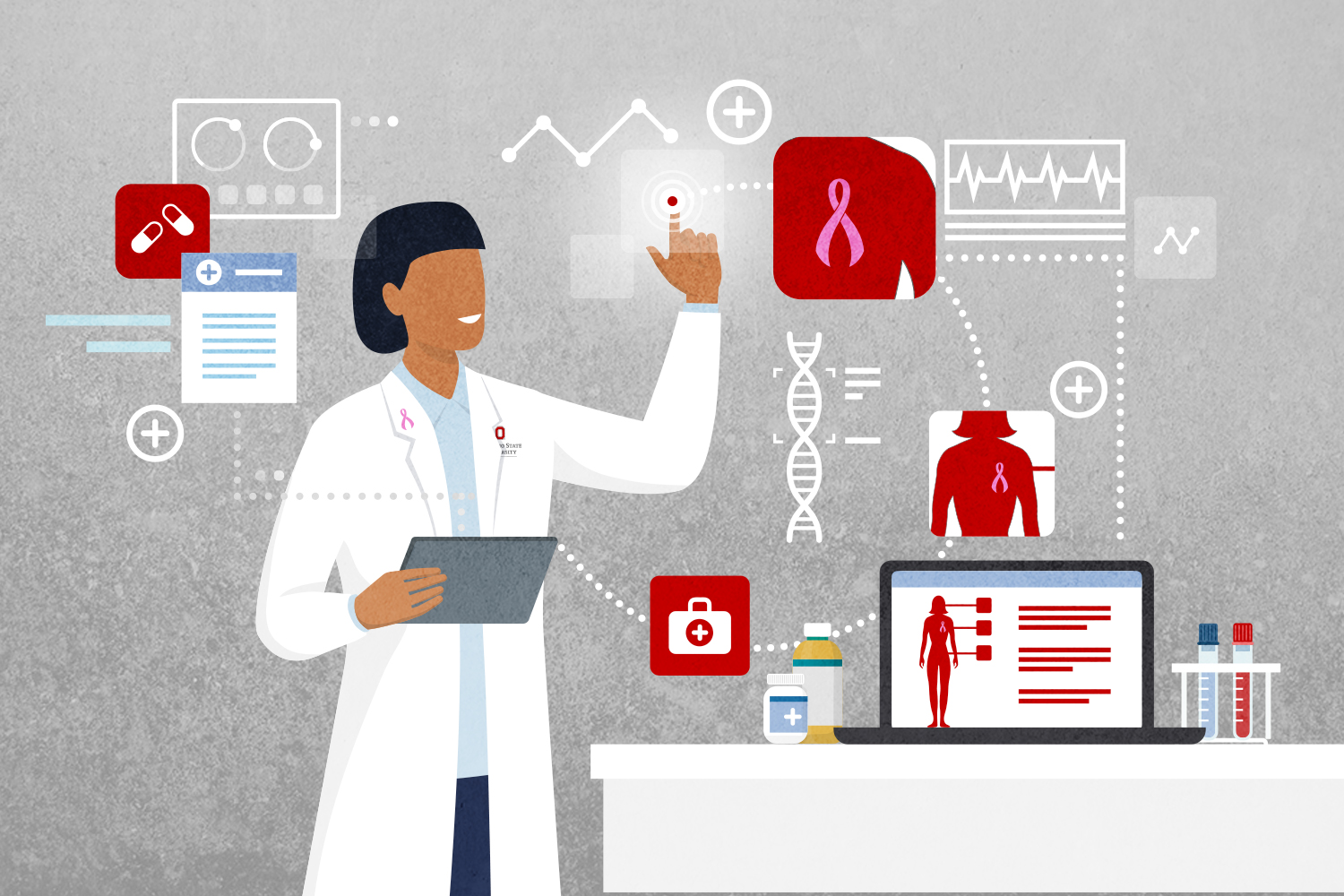Striking back at breast cancer with innovation

A breast cancer diagnosis hits women on multiple fronts.
“Just the shock of having breast cancer, then the removal of your breast and replacement and then the chemotherapy is just a terrible experience,” Judit Puskas said.
Puskas is a distinguished professor in polymer science and member of Ohio State’s Sustainability Institute. She was recently an Innovator of the Year finalist in Ohio State’s Office of Research for her ongoing development of a breast implant coating that would deliver cancer drugs to women in a safer way.
It’s one of many innovative products Puskas has developed with her “Green polymer chemistry,” which not only helps people but is created in a way that’s sustainable for the environment. Those products include everything from drug-coated heart stents to safer rubber bullets to COVID-19 masks to her breast implant research, which she recently spoke to us about.
(In the past) we submitted proposals, and reviewers said, ‘What you are proposing is not possible.’ Well, since then, we’ve demonstrated in testing it’s possible. And there’s a huge difference between intravenous administering and this local release.
And it’s also the reconstruction; this is something important that is very often lost. Losing a breast for a woman is a psychological issue as well as a physical issue; it affects your identity. My goal is to help women with this traumatic situation.
When a person has a blockage in an artery to their heart, they put stents in. But some people have a lot of cell proliferation. So even though they open the artery, it closes back up.
Taxus is a cancer drug that kills these cells so the artery doesn’t close back up.
It was my assumption you can incorporate this into the breast implant coating, and then it will be delivered in the breast.
Maybe it’s presumptuous, but I would like to draw a parallel with the COVID crisis. The background of the COVID-19 vaccine, the messenger Pfizer-BioNTech and Moderna vaccines — the whole concept of this messenger RNA vaccine was developed by a Hungarian woman, like myself. Often Katalin Kariko is neglected when discussing the technology. She started this research in Hungary in 1980 and submitted all types of proposals and everyone said, ‘Your idea is crazy.’
But after years of struggling, she finally got on at the University of Pennsylvania. They did biological testing for various diseases, and it wasn’t successful. Then comes COVID, and you see how it works.
Her idea wasn’t crazy.
We still have problems, but I am hopeful it’s changing. It seems to be. Ohio State is really embracing this research, and I’m very glad I’m here now. It’s been incredible.